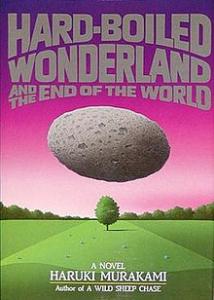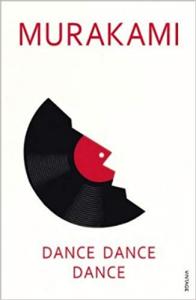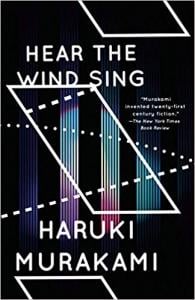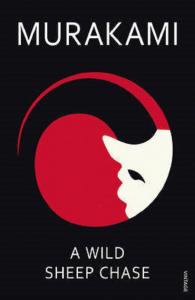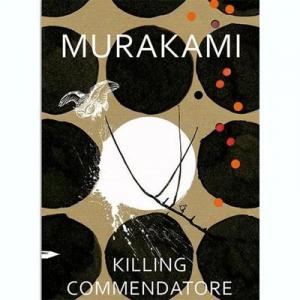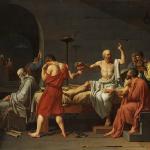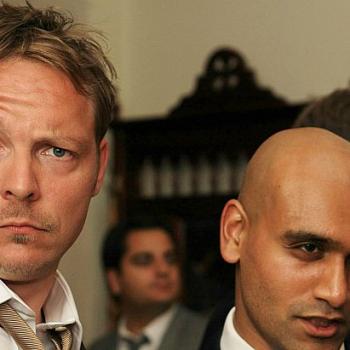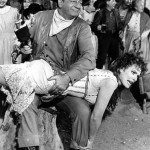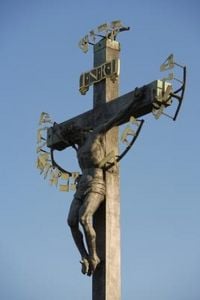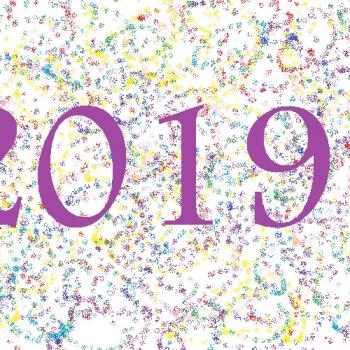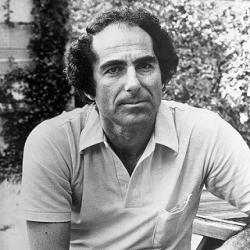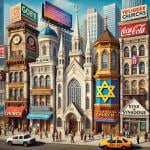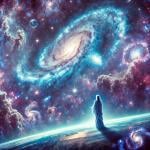Part 2) Good Novels
11) Hard-Boiled Wonderland and the End of the World (1985)
The novel follows two parallel worlds at the same time: in one a “calcutec”, someone who can use their mental powers to encrypt messages, is hired to use a forbidden method to encrypt some codes but it leads to his life going upside down, and in the other a man enters a strange town, where his mission is to extract dreams from unicorn skulls. Of course, these two parallel worlds soon also converge.
Murakami is mostly famous for his surrealistic “magical realism” novels (e.g. Kafka on the Shore), but he also has novels that are straightforwardly realistic (e.g. Norwegian Wood), but Hard-Boiled Wonderland and the End of the World is his only novel so far that can be considered a straightforward science fiction/fantasy novel. Is it a good example of a sci-fi book? Yes, it’s a very fun read which I definitely recommend. Is it a great example of a sci-fi novel? Not really; Murakami doesn’t have much to say in comparison with the greats of the genre like Philip K. Dick or Ursula K. Guin. While this novel is genuine fun, I’m glad he usually sticks to his unique style.
10) Dance Dance Dance (1988)
This is the fourth and last novel in “The Rat” tetralogy, written after Norwegian Wood, this is the last of Murakami’s early novels, this novel would not shock the casual reader of Murakami, as it seems to hold the seeds of Kafka on the Shore and The Wind-Up Bird Chronicle. In this novel the unnamed narrator returns to a location from the third book of the series to find it completely transformed, and he gets involved in a complex plot which involves murder, supernatural transformation of the hotel, a psychic 13 year old girl, and all of these bizarre events are somehow connected.
In one of the reviews quoted in the back cover of the book, it is written: “If Raymond Chandler had lived long enough to see Blade Runner, he might have written something like Dance Dance Dance“. It’s true that this novel is basically a hard boiled detective novel dropped into a giant barrel of surrealism, but it’s not Chandler+Blade Runner, it’s more Chandler+Alice in Wonderland. If that appeals to you, you’ll love this novel. It’s gripping and fun to read and very hard to put down, but ultimately it lacks the emotional depth of a typical Murakami, therefore it ranks at the 11th plot.
9) Hear the Wind Sing (1979)
This one is Murakami’s first novel and the first in “The Rat” tetralogy. The story begins with the suicide of the narrator’s girlfriend, and as he deals with the grief of this event he finds a woman lying on the floor in the washroom of a bar he frequents and and carries her home, and this begins a close friendship with a hint of romance between them. The Rat writes novels and is obsessive about an absent woman.
This novel is much better than Pinball, 1973, and it shows off the immense talent of Murakami in a much more comprehensive way. This novel is very humorous, and at the same time it is extremely sad, and it’s really a wonder how Murakami pulls off all these complex emotions in such a short novel, and also how much deep his characters are despite being so minimalist in their portrayal. The fact that I have ranked this as 11 is not because of its weaknesses, but because it remains overall a raw novel and the rest are just better.
8) A Wild Sheep Chase (1982)
Here, in this third novel in “The Rat” tetralogy, and in my opinion the best of the bunch, we come to Murakami’s first “famous” novel, and for most people his first major work. A mysterious man sends our narrator in search for a sheep with mystical powers that ensures the immortality and success of its owner, and as the protagonist chases this wild sheep he unravels mysteries of Japan’s past, as well as his own past, as the sheep is connected to his friend, the Rat.
What I said about Dance Dance Dance is true about A Wild Sheep Chase also, as this too is a postmodern and surreal detective hard boiled fiction, but I rank it higher because of the element I said was missing in the 4th novel, that is an emotional depth. Without spoiling the story, the novel engages with death in a very unique and poetic manner, and it also deals with the historical sins of Japan in a way that Murakami only fully reprises in Kafka on the Shore. While I’d recommend numbers 14 to 9 on this list only after reading the rest of Murakami’s oeuvre, this one can be read as a good beginner’s book to Murakami.
7) Killing Commendatore (2017)
In this latest of Murakami’s novels, our protagonist is a commercial portrait painter who has been dumped by his wife, and moves to a house owned by a famous and great Japanese style painter. There he discovers a painting of his, “Killing Commendatore”, which had been hidden by the artist. Opening the painting opens a portal to parallel universes, a portal he will have to close.
I rated this book at number 7. As I said before, I think numbers 6 to 1 are Murakami’s masterpieces, and therefore I have put this particular book on the border between good books and masterpieces, and I have a specific reason for that. If I had read only this book, I’d call it a masterpiece, because it has everything: extremely intricate plot, character growth, deep emotions, everything. But it also has a flaw: in this book Murakami repeats himself too much, creating something of a pastiche of his previous novels, and every part and scene of the novel reminds the reader of a previous work of his. Many readers accuse Murakami of being repetitive, but while he repeats certain themes and images a lot, all of his novels except this one are genuinely unique. So I rank Killing Commendatore at number 7 because it’s genuinely a great novel, but not higher because it’s not as creative.

